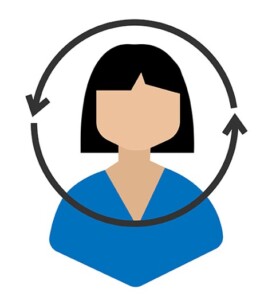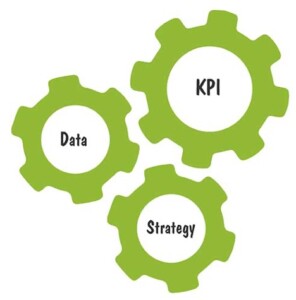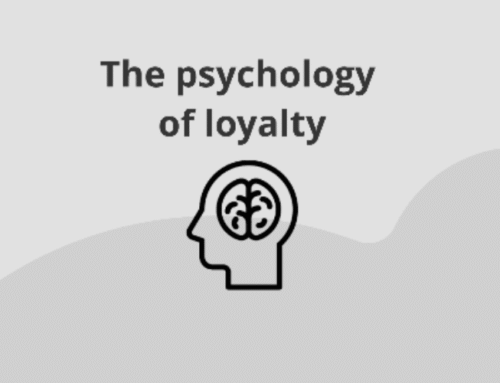Loyalty Marketing KPIs –A Guide to Getting Started
Summary: Loyalty programs are an investment. For most businesses, they mean added hours of learning, setup, management, and understanding. Proving their return with the right key performance indicators can present unique business intelligence challenges for even the most experienced marketers. In this post, we talk about some of the unique pain points, solutions, and opportunities associated with understanding your loyalty marketing KPIs and how they affect the bottom line.
The Importance of Hard Data
Someone once said to me, “The first job of marketing is to prove itself”. That is, no matter how great we think our work is, it means nothing unless we have a story to tell about it – a deliverable that describes not just where we are, but how we got there.
Time and again, the adage has proven true for me. The process of filtering down and absorbing the data collected during any given campaign’s execution has been as vital to the next pivot in my strategy, as the result itself:
- What products drove our last jump in sales?
- Who was buying?
- What led them to buy?
- What channel did they find us on?
- If it was through a promotion, was the AOV profitable enough to offset campaign costs?
- How often did customers who took advantage of that promotion return and shop with us again?
Just some of the many data points that help us make the iterative adjustments to our strategy that added up to big gains at the end of the year.
In reality however, these KPI’s are often only as qualified as the methods we use to collect them. For merchants operating in the brick and mortar or multi-channel retail space, this has been an incredibly difficult problem to solve.
A Brief History on the Evolution of KPIs
For those of us old enough to remember, there was a time when marketers would anxiously await quarterly reports. When they finally arrived, it was like tearing open the wrapping paper on our birthday presents. Though it provided a bit of an adrenaline rush, we were essentially flying blind, for months at a time.
Loyalty programs are as much a way to better understand consumer behavior through the application of data, as they are a way to bring in and retain new shoppers.
Zoom forward thirty years and virtually any small piece of data we want is available on demand and able to be parsed against almost any other piece of micro data, no matter the significance, in real time.
While this has been a virtual God-send for digital marketers and ecommerce merchants, it left multi-channel brick and mortar businesses fumbling with how to aggregate and normalize multiple data sources in a way that made sense. Almost infuriatingly, we could now measure virtually any action customers took on our website, but didn’t have a great way to tie this data back to our in-store sales.
How Loyalty KPI’s Change the Game
Enter omnichannel loyalty. Loyalty programs are as much a way to better understand consumer behavior through the application of data, as they are a way to attract and retain new shoppers. It’s through this understanding that we develop the kinds of personal interactions that breed loyal customers.
Loyalty software acts as the glue that holds your data together, across channels, platforms and devices. Each customer, having been assigned a unique identifier can now be that can be tracked wherever your they choose to do business with you.
This presents a conundrum for merchants, large and small. Adding a new layer of loyalty based metrics on top of an already dense web of data that your web properties create, can seem daunting, to say the least. Yet, customers now expect the highly tailored shopping experiences based on this very data.
- They want to be shown ads for products that they’ve expressed interest in.
- They demand offers optimized for the places they shop.
- They expect account information including purchase history and payment methods to be channeled seamlessly from one touch point to the next.
- They want to be able to shop at one point of sale and pick up at another.
Leveraging omnichannel customer retention software helps you build customer loyalty. Equally as important however, it also gives you a more complete picture of who your customers are, how they shop, and what drives them all the way from the zero moment of truth to the point of purchase. Gaining a complete understanding of how loyalty program data can drive KPI’s will help you better serve customers and grow the bottom line.

Getting Down to Numbers
*Whether you’ve onboarded a specific loyalty program software or not, the information contained in this post can be valuable to you. If you have, many of these metrics will only be available for integrated programs, however. If you haven’t, bLoyal builds integrated omnichannel loyalty software and we’d be happy to speak with you about your needs.*
So, what’s your next move? How can you extract the right data to build, manage and improve the personalized shopping experiences that customers now demand? How do your loyalty program numbers fit with your overall business numbers? And what can you do better to improve your understanding of how customer retention marketing is effecting your bottom line?
There are literally an endless number of ways to slice, dice, cut, and shred the information most omnichannel loyalty program produce. If you’ve already integrated, you’ll now be able to see overall shopper data comingled with loyalty program data. You’ll know which channel your most valuable shoppers came in over, which programs are generating the most traffic, what your most important loss leaders are.
Some data will look like nothing at all, unless stretched out over a longer stretch of time. Others will seem like dramatic spikes that, in the big picture, don’t really have too much bearing on your bottom line.
At this point, we would encourage you to take a step back from the ledge and remember that you own your data. Your data shouldn’t own you. The first step down the path to better utilizing this data is understanding how to identify which numbers are crucial to your success and which are, in effect, white noise.

Getting Started with Loyalty KPIs
What are some effective ways that we can take back control of our data and begin building loyalty program KPI’s which act as bellwethers for our overall strategy?
Figuring out how program data fits in with your overall measurement strategy is the first step.
There are three main questions that your loyalty KPIs should be answering:
- How do loyalty program members perform against non-members? How is loyalty driving your bottom line
- Which of your loyalty initiatives are providing the most benefit? What members are having the biggest impact? Why do customers use your loyalty program on one channel more than others
- How can we continue building our programs and driving growth using loyalty marketing strategies?
Our goal is distill the hundreds of thousands of data points that any marketing program produces, into a set of key performance indicators that we can look at, in order to judge the relative health and effectiveness of your loyalty program, both in its own right, and as it affects your larger financial picture.
How much weight should you put on these figures? The answer is “No more than any other KPI”. While it’s important to have them, it’s even more important to understand what drives them. They should be reliable, but you’re going to want to become intimately familiar with what they mean. In the same way that you would when becoming fluent in a new language, you want to learn the meaning of each word in a sentence, instead of just memorizing the sentences, alone.
For example, what can your loyalty program data tell you about the effect that market penetration has on your overall bottom line? Which device yields the most active users. What is your most popular method of sign up?
We’re going to answer those questions here and give you some other valuable pointers for understanding how loyalty is driving your bottom line.
Understanding Value
When we speak of loyalty marketing, there are two clear goals:
- Increase total number of visits by any given shopper, during a specific period.
- Increase the amount spent by any given shopper, with each visit.
While these measurements are, by no means, exclusive to your loyalty program, they’re the best metrics to use if you’re looking tell a story about how effective you’ve been. Keep in mind, however that both these numbers can be effected by a wide variety of circumstances throughout your organization. These aren’t dials, so much as they are needles. They are crucial to knowing where you stand, however and will be a good indicator of your loyalty program’s overall success.
Segmented Customer Lifetime Value
Of the big kahunas, customer lifetime value (LTV) is the big kahuna. We want to better understand how, or whether, your loyalty investment is moving the needle on the value each customer brings to the table over the course of their time doing business with you.
So far, so good.
Measuring LTV is nothing new. There are two basic formulas here: One is a basic 30,000 foot overview. The other takes into account more advanced metrics like churn, decay, and stickiness. For simplicity’s sake, we’re going to focus here on the former.
When measuring LTV, the traditional models say something to the effect of:
The profit an average customer brings in over the course of a year
(-)
The average amount it cost to acquire that customer
(*)
The number of years that customer shops with you
(=)
Customer Lifetime Value
The difficulty with this model is that it provides a limited scope of information. This is a result of bundling all of your customers into one large group. In reality, we know that the way that a 50 year old man in Ohio shops is going to vary widely from a 20 year old woman from Washington. Different types of customers may cost different amounts to acquire, serve, and close, depending on how they shop.
Segmented customer lifetime value is about understanding these unique buyer personas and using that data to serve deeply personalized campaigns that drive engagement.
While this has become quite a bit easier for eCommerce merchants in the digital age (though it’s still not commonplace), omnichannel loyalty has created a similar revolution in the way that multi-channel or brick and mortar merchants are able to collect and analyze loyalty program data by using tokenized identifiers to track shoppers over multiple platforms – in store, online, or through mobile devices.
A revised segmented model looks more like this:
The profit a specific dimension of your customers brings in over the course of a year
(-)
The amount it cost to acquire them over a defined channel
(*)
The number of average number of years that customers shopping over that channel stay with you
(=)
Segmented Customer Lifetime Value
Segmented Average Order Value
If customer lifetime value had a lieutenant, it would be AOV. Like your LTV, AOV has been around a long time. A standard AOV however would describe our customer, again, as an aggregate number. Like segmented LTV, Segmented AOV makes an impression when you can begin to understand it within the context of a customer’s broader behavior patterns and purchase history.
Put these two metrics in your pocket for now. They’ll be important numbers to glance at from month to month, check in on quarterly, and investigate, yearly. We, in no way suggest doing away with your existing LTV or AOV measurements. If you’re looking to maximize loyalty investment, digging into the details is going to be a great start, however.
Loyalty Program KPIs
Drilling down into your customer retention specific metrics is where the magic happens. Understanding how your various strategies are effecting the following KPIs, will help you better understand how they move the needle on your Customer Lifetime and Average Order Value.
Signups
In our recent blog, ‘Advertising your Loyalty Program’, we established that building your loyalty program is a conversion, unto itself. We know that loyalty program members spend more, and with greater frequency. In fact, when examining 250 bLoyal clients, loyalty program members show an across the board average of 36% higher customer lifetime value than non program members and 32% higher average order value.
Keep in mind that a well measured signup metric provides two benefits. That of increasing your bottom line. It should also give you a sample data pool on which to start making loyalty program decisions. It’s not critical that you maintain 100% penetration, but the higher your join rate, the more reliable your sample data.

Signup Growth Rate
It’s important to measure the history of growth rate. Remember however that program signup KPIs, unto itself doesn’t necessarily mean that people are staying. Pair high signup rates with overall churn, to better understand how well you’re doing at keeping customers that you earned.
In our experience, signup lift can increase at up to 10% a month, but 5 to 7 percent is probably a healthier expectation.
Signup by Device / Location
Where did your most active customers sign up? It’s a good idea to focus on the good and cut the dead weight (in as much as possible). For instance, and all things being equal, if you find that 90% of program members joined through a website landing page, let’s invest there. A low signup percentage isn’t necessarily a harbinger of doom, but we want to grab the low hanging fruit, first.
You can always go back and devise new ways to encourage signup over lower performing channels.
Engagement per Signup by Device
How does the LTV and AOV of customers who signed up on mobile, compare to that of customers who sign up via your website or at the register?
bLoyal aggregate data shows that there can be a wide disparity between signup locations. For instance, younger users tend to be more comfortable with mobile devices to shop. They also have more expendable income. Depending on what you’re selling, it may be more valuable to focus campaigns around a single signup type.
Overall Membership Penetration
Membership penetration describes the percentage of your overall customers that are signed up for and actively using your loyalty program. While you’ll never get 100% in this category, we’ve seen pushes up to 60% among existing bLoyal clients.
Why does this matter? Beyond just having more customers onboarded. This is a large enough data set to get a pretty clear picture of your overall customer behavior patterns.
Breakage
You want to know, not only how many people are taking you up on your offers, but where, when, and how. Naturally, not everyone is going to cash in on every promotion, but you should be able to form a clearer picture of what your customers are interested in, by examining which of your offers are most engaged with.
We want to look at breakage from three perspectives:
- Overall Growth – Is your breakage growing over time. Are more people using your offers?
- Comparative by Offer – Do offers on one product get used more often than offers on another?
- Discount Values – What is the critical mass for breakage. How much of a discount do you have to offer, in order to get consumers to follow up on the offer?
Be careful to understand and test each variable, independently. For instance, is the product driving breakage or the promotion?
Goal Completion
Every marketing campaign, loyalty based or otherwise, has a conversion point. Sure, we want to drive users to spend more. But that 30,000 ft view is only managed through the lens of how successful your individual campaigns are. What is your specific campaign goal? How often are you meeting them?
Origin – Of the members that completed your goal, what is the break down on four key figures?
- Where channel did they first learn about the campaign?
- Which channels drove the highest engagement with the campaign?
- Where and on what device did they redeem the offer related to the campaign?
- Was the order value on the ticket where they completed the goal, higher or lower than their AOV?

Frequent Buyer Programs and Goal Completion
There is some enormously interesting data surrounding gamification and goal completion where it concerns your loyalty program metrics. For instance, using “sunk cost” methodology, wherin you start a customer with a certain amount of points or loyalty dollars, can significantly impact a customer’s decision begin engaging with FBPs.
For example, take a simple punch card you’d find in a coffee shop. Offering a program member triple points for their first purchase or punching three holes, instead of one, can dramatically increase breakage by driving personal investment in goal completion.
Frequent Buyer KPI’s should, of course, include obvious metrics such as “how many times the goal was completed”, but should also be split tested to see few instant rewards a customer has to receive, in order to feel invested and continue towards the goal.
You’ll also want to measure which demographic and psychographic (that is buyer types, based on interest), more often complete your goals. 21% of millennials say that they’ll 33% of Gen X’ers will do the same.
Engagement
Word-of-Mouth
One of the strongest drivers of loyalty program growth is often ambassadorships and word-of-mouth. Social shares of your loyalty programs are a great way to attach a ‘word-of-mouth’ metric to your dashboard. It may not be the whole picture, but if you provide engaging content, it’ll provide enough of a spike to consistently measure how your program is performing in this elusive measurement.
If you want to take the next step into ambassador programs, creating trackable referral codes can be a great way to understand who’s helping to grow your program. Next measure how different offers perform across business types
Retention
Retention shows the decay rate of member activity. This can help you determine how frequently you should be making offers. Like the story of ‘Goldilocks and the Three Bears’, we don’t want to offer more discounts than we have to. Not enough won’t drive return shoppers, though. Make sure that you are keeping an eye on how often and what size promotions you should be offering in order to meet the KPI that you’re looking for.
Churn
Churn is going to be a metric of how many people are leaving your program vs. how many people are coming in. At bLoyal, we generally consider a program member hibernating when they haven’t engaged your program for at least 12 months. Every organization differs, though. At the very least, you need a 1:1 ratio here. An ideal 1:1.5 to 1:2 is a great goal to start with, but we’ve seen ratios as high as 1:3.
Keep in mind that the closer you get to maximum penetration, the more this will slow.

Split Testing
The importance of split (or A/B) testing your loyalty program offers and promotions is essential to growing your loyalty marketing programs. In most advanced loyalty programs, there is some method of sending out split tests with varying discount percentages, points offered, etc. to similar target groups to see which campaign performed better.
Closing the Deal on Loyalty Marketing KPIs.
As marketers, we’re never far from the need to tell a story about how the work we’re doing is affecting the bottom line. As executives, business managers, and entrepreneurs, it’s imperative our success. Knowing which KPIs act as true indicators of your program’s health can help measure the success of your program; not just against non-program members, but against your company wide performance indicators.
If you’re interested in learning more about how bLoyal measures loyalty program success, contact us for a free demo.




